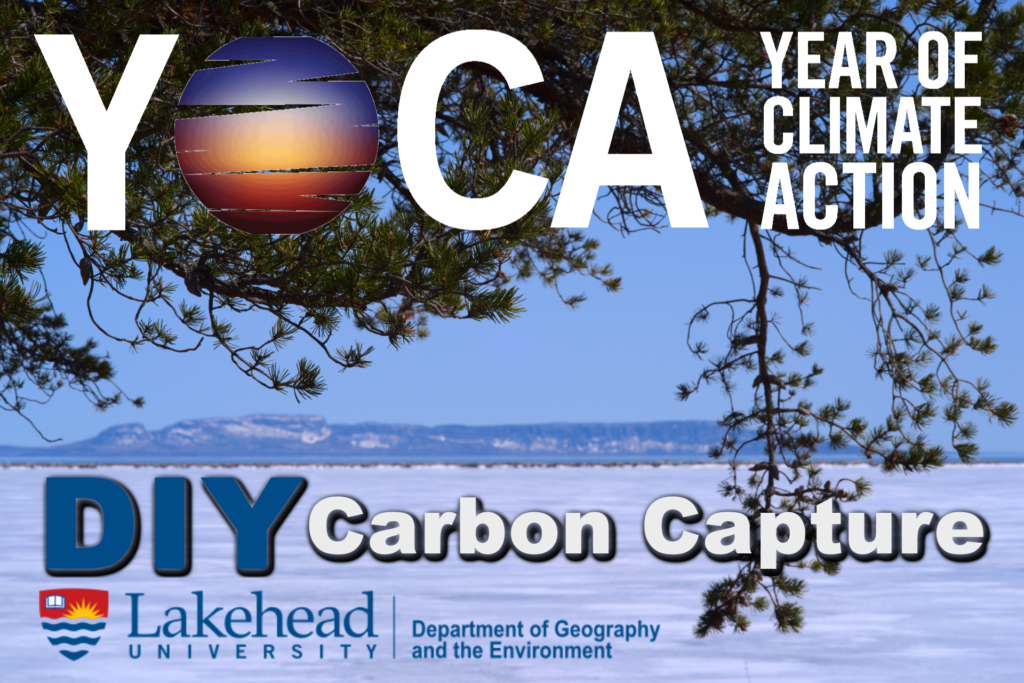
Climate change is a major topic for teaching and research in the Department of Geography. The causes of climate change relate directly to our extraction and consumption of fossil fuels as a source of primary energy. The patterns of climate change are determined by processes in the atmosphere and our climate system. The impacts of climate change are location-specific, but will be felt by societies, industries, and natural systems around the world.
Climate action refers to steps that can be taken to reduce our effects on climate and mitigate these impacts. One step that can be taken is to increase global forest cover. Photosynthesis takes carbon dioxide out of the air; plants can use this carbon to build organic tissues and grow. Roughly half the mass of a tree is carbon pulled from the air in this way. A growing tree sequesters carbon and offsets a small amount of human emissions.
Eventually a tree will stop growing larger and accumulating carbon. Planting trees won’t solve climate change. But by slowing down the rate of change, growing more trees is an action that can buy us time to end our reliance on fossil fuels and stop the emissions.
Plant a Tree!
Jack Pine
Jack Pine thrives in an abundance of direct sunlight, ideally receiving over 6 hours/day in summer. Jack Pine therefore prefers a drier soil – sand, loamy-sand, or sandy-clay, that is well- to rapidly-drained. Jack Pine can even tolerate very dry conditions.
White Pine
In northerly, cool, humid climates, such as that of central Ontario, White Pine generally prefers an abundance of sunlight, though it can tolerate some shade. White Pine prefers a moderate amount of moisture, fresh to moist loamy, or sandy-loam soils that are well-drained. White Pine is more vulnerable to drought when young. White pine can grow to exceptional sizes, occupying notable space once mature.
White Spruce
White Spruce is a shade-tolerant species but still prefers lots of sunlight. White spruce can tolerate a range of moisture conditions, from dry to moist, and a variety of soil types, including sands and sandy-clay. White spruce do however, prefer the soil be moderately well-drained.
Black Spruce
Black spruce is known to tolerate a range of soil and site conditions, including low-light environments and poorly-drained soils. Black spruce is naturally abundant in lowland, mucky conditions, but can also be a good choice for north-facing slopes. Consider black spruce for less-fertile soils, such as coarse sands, coarse loams, or gravelly materials.

